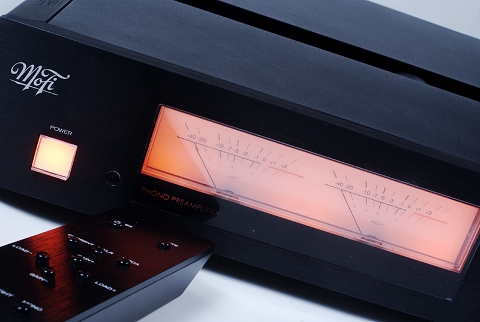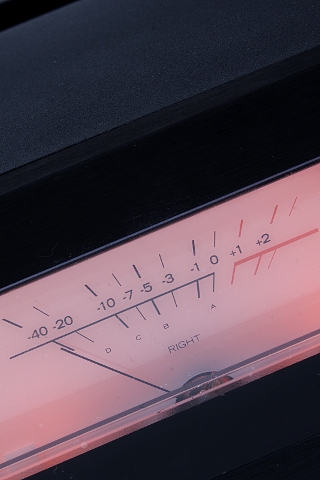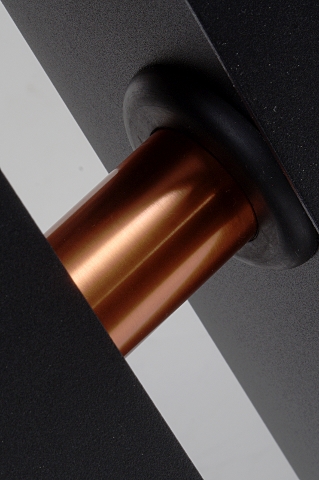about Audio, High Fidelity
& Home Entertainment technologies
pid: 607-2025/10/01 (v1.2)
Privacy Policy

The MasterPhono replaced the reference phono preamp we regularly use (Rotel RHQ-10 "Michi"), while the rest of the system remained unchanged (Melos Line Series Plus, Parasound HCA3500, ATC SCM-50PSL). The source was the Linn Sondek LP12 turntable with an Ittok LVII tonearm. The cartridge used was the Linn Karma.
Setting up the device is not a difficult task. What you need to focus on is properly adjusting the load and gain settings to optimize both the preamp's dynamic range and the overall system performance. Any adjustment you make on the front panel can also be made via the remote control, which is a significant convenience. One usability-related observation is the absence of a balance control—a feature I consider essential for compensating for channel imbalances in the cartridge which are unavoidable, even with high-priced products.
From the very first moment, the MasterPhono invites you to play records and evaluate its performance firsthand. To cut to the chase, it does not disappoint—in fact, quite the opposite. This high-end MoFi unit serves as yet another proof that vinyl still has much more to offer, with details that often get lost in the mix.
With the company officially stating a massive 85dB signal-to-noise ratio (for MC settings) and measurements confirming strong performance in this regard, the fact that the preamp is virtually silent should come as no surprise. As I have written before, low noise is not just about whether you can hear background noise but also how the music itself sits within that background (objectively the same concept, but perceptually somewhat different). The MasterPhono provides an exceptionally dark background, allowing the music to emerge vividly, fill the space, and deliver outstanding macro-dynamic expression and contrast. Of course, this depends on the quality of the recording. Don’t expect miracles from poorly pressed, heavily compressed rock vinyl—after all, this is a phono preamp, not a superhero. However, if you play a well-mastered record, you may hear new details for the first time, thanks to the MasterPhono’s ultra-low noise floor, which allows it to effortlessly reproduce macro-dynamic profiles and create an imposing presence in the room, presenting details in just the right way.
The tonal balance is beyond reproach, as you would expect. With the MoFi in place of my reference phono preamp, the system maintained its neutrality while possibly gaining a slightly clearer, faster, and more precise rendering of the lower frequencies. The bass was tight, weighty when necessary, and, in some cases, commanding. The MasterPhono outperformed the reference unit in the very low-frequency range, particularly in terms of presence and control. This level of performance extended across the entire low-frequency spectrum, delivering clean, fast playback without exaggeration, with well-defined rhythm and an engaging flow that invites foot-tapping.
The midrange was detailed, well-layered, and exceptionally clear without sounding too forward or fatiguing. What you get is a sense of balance, excellent articulation of vocals, and impressive choral performances that effortlessly fill the room.
The high frequencies provided a great feeling of extension and air, along with excellent speed characteristics. The attack/decay and sustain times were rendered accurately, and the release was slightly faster than what I was used to from the reference preamp. Harmonics were well-balanced, avoiding excessive warmth—an initially striking presence that, once accustomed to, becomes an invaluable tool for rediscovering your record collection.
Stereo imaging is truly top-level (provided you use equally high-quality records and a capable front-end setup). With well-defined boundaries, impressive depth, and precise spatial movement, it enhances realism when playing a well-mastered record.
Finally, I won’t even get into the convenience of adjusting the load from your listening position (if that’s something you care about) or fine-tuning the cartridge azimuth if you’re technically inclined. The MasterPhono is not only highly capable but also fun to use.
If I were to write a wish list for Peter Madnick, it would include proper balance control and a suitable test record for azimuth (and other) measurements. Let's not forget that MoFi/Mobile Fidelity also produces records, and given the price category, bundling the device with a high-quality test LP would make perfect sense. Come on, Peter… you started this!
Conclusion
We’re dealing with a truly serious phono preamp here, and that’s no small statement, given how demanding these devices are in terms of design and implementation. Fully equipped with connectivity options, aesthetically pleasing, and featuring settings that allow you to fine-tune your system, this is a reference-level product. If you own a high-end turntable, the MasterPhono is built for you!
Listening Sessions Recording
The following recordings were made with a DV-RA1000 Tascam master recorder (using 24bit/192kHz sample rate) and you can download them to have an impression of what the device under review sounded like. It is obvious that any recording of this kind could not be absolutely transparent but, according to our experience, the majority of sound attributes we listen to, during the actual listening sessions, are preserved. No need to say that you should use these samples cautiously and for informative purposes only. Do not rely on them exclusively to make any buying decisions. The file format is .flac, so expect that the zipped files will be quite large (even if the clips are about a minute or less long. You could use an ABX listening tool like the ABX plug-in for foobar2000 if you want to make some more elaborate experiments. Contact us if you have any questions.
| Listening Sessions Recording TOC | |
|---|---|
| Track #01 | MoFi MasterPhono | Linn Sondek LP12/Ittok Karma (100Ω/60dB) |
| Reference | Reference: Linn Sondek LP12/Ittok/Karma, Rotel RHQ10 "Michi". |
Previous | Next | More Reviews



